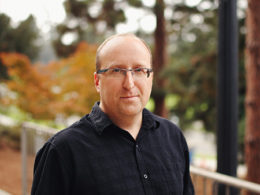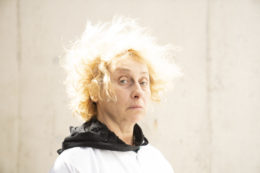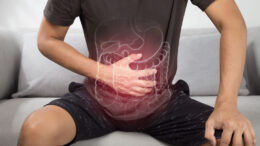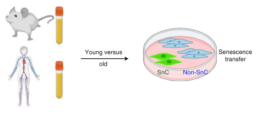Cell and Tissue Engineering

Cell and tissue engineering uses engineering principles to understand and control the behavior of cells and tissues. Our scientists study how cells behave and accomplish their functions in order to later direct cellular activities to perform useful biological tasks--such as destroying tumors, manufacturing vaccines or fending off bacteria.
Tissue engineering and regenerative medicine work toward the same goals at the larger scale of tissues, fluids and organs. They may use stem cells to create custom-grown organ and tissue replacements, or devise strategies to repair or prevent tissue damage from aging or disease.
Research in cell and tissue engineering has real-world impact in areas like:
Aging, cancer, infectious disease, microbiome, and regenerative medicine.
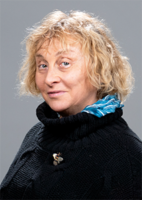
Irina Conboy
For more information, see: https://conboylab.berkeley.edu/
Our work has been focused on establishing new paradigms in multi-tissue stem cell aging, rejuvenation and regulation by conserved morphogenic signaling pathways. One of our goals is to define pharmacology for enhancing maintenance and repair of adult tissues in vivo. The spearheaded by us heterochronic parabiosis and blood apheresis studies have established that the process of aging is reversible through modulation of circulatory milieu. Our synthetic biology method of choice focuses on bio-orthogonal non-canonical amino acid tagging (BONCAT) and subsequent identification of age-imposed and disease-causal changes in mammalian proteomes in vivo. Our drug delivery reg medicine projects focus on CRISPR/Cas9 based therapeutics for more effective and safer gene editing.
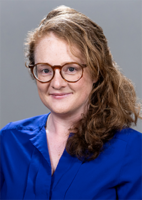
Derfogail Delcassian
The development of immunoengineering technologies to direct immune cell function. We build artificial lymph nodes, mRNA vaccines and 3D printed interfaces to study and control immune cell behaviour. These technologies have applications in cancer therapy, inducing transplant tolerance, spaceflight and auto-immune diseases.

Daniel A. Fletcher
For more information, see: https://fletchlab.berkeley.edu/
The Fletcher Lab develops diagnostic technologies and studies mechanical regulation of membrane and cytoskeleton organization in the context of cell motility, signaling, and host-pathogen interactions. We specialize in development of optical microscopy, force microscopy, and microfluidic technologies to understand fundamental organizational principles through both in vitro reconstitution and live cell experiments. Recent work includes investigating the mechano-biochemistry of branched actin network assembly with force microscopy, studying membrane deformation by protein crowding and oligomerization with model membranes, and reconstituting spindle scaling in encapsulated cytoplasmic extracts. The long-term goal of our work is to understand and harness spatial organization for therapeutic applications in cancer and infectious diseases.
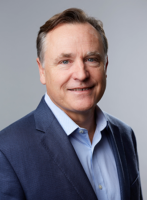
Kevin Healy
For more information, see: https://biomaterials.berkeley.edu/
Research in the Healy Lab emphasizes the relationship between materials and the cells or tissues they contact. The research program focuses on the design and synthesis of bioinspired materials that actively direct the fate of mammalian cells, and facilitate regeneration of damaged tissues and organs. Major discoveries from his laboratory have centered on the control of cell fate and tissue formation in contract with materials that are tunable in both their biological content and mechanical properties. Professor Healy also has extensive experience with human stem cell technologies, microphysiological systems, drug delivery systems, and novel bioconjugate therapeutics.
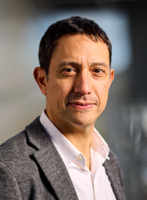
Christopher Hernandez
For more information, see: https://www.hernandezresearch.com/
Dr. Hernandez’s research in biomechanics examines the musculoskeletal system, microscopic organisms and interactions between microbes and materials. Current projects include understanding how the microbiome influences bone and infection of total joint replacements, how bacteria are influenced by mechanical stress and strain, and engineered living materials.
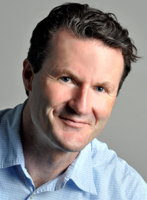
Tony Keaveny
For more information, see: https://bonelab.berkeley.edu/
Biomechanics of cortical and trabecular bone; design of spine prostheses; bone fracture and osteoporosis; tissue engineering of bone.
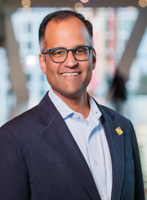
Sanjay Kumar
For more information, see: https://kumarlab.berkeley.edu/
Our lab seeks to understand and engineer mechanical and other biophysical communication between cells and materials. In addition to investigating fundamental aspects of this problem with a variety of micro/nanoscale technologies, we are especially interested in discovering how this signaling regulates tumor and stem cell biology in the central nervous system. Recent directions have included: (1) Engineering new tissue-mimetic culture platforms for biophysical studies, molecular analysis, and screening; (2) Exploring mechanobiological signaling systems as targets for limiting the invasion of brain tumors and enhancing stem cell neurogenesis; and (3) Creating new biomaterials inspired by cellular structural networks.
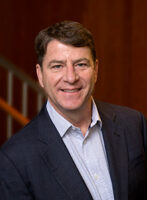
Phillip Messersmith
For more information, see: https://bioinspiredmaterials.berkeley.edu/
My laboratory is interested in understanding structure-property relationships in biological materials and in using this information to design biologically inspired materials for use in healthcare. Fundamental studies include single molecule and bulk biophysical studies of biointerfacial and bulk mechanochemical phenomena in biological materials, whereas our applied studies the design and synthesis of novel biomaterials for tissue repair and regeneration.
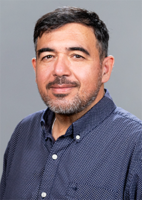
Mohammad Reza Kaazempur Mofrad
For more information, see: https://biomechanics.berkeley.edu/
Molecular and Multiscale Biomechanics; Bioinformatics and Computational Biology; Statistical Machine Learning; Computational Precision Health; Microbiome; Personalized Medicine
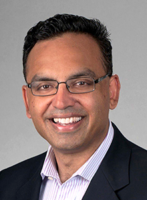
Niren Murthy
For more information, see: https://murthylab.berkeley.edu/
Our laboratory is focused on developing new materials for drug delivery and molecular imaging.
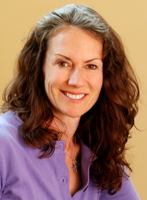
Lisa Pruitt
For more information, see: https://mpg.berkeley.edu/
Characterization of structural evolution in medical grade ultra high molecular weight poliethylene due to sterilization: the implications for total joint replacements.
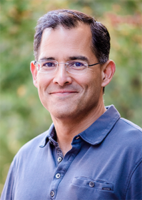
David Schaffer
For more information, see: http://www.cchem.berkeley.edu/schaffer/
Our research program melds basic biology and applied engineering principles to investigate preclinical and clinical gene and stem cell therapies, i.e. gene replacement and cell replacement approaches to treat human disease.
News About: Cell & Tissue Engineering
Yartsev wins Richard Lounsbery Award
Michael Yartsev will receive the 2025 Richard Lounsbery Award from the National Academy of Sciences to recognize his extraordinary scientific achievement in understanding the neural basis of natural behaviors.
Alumnus Di Carlo will lead new UCLA Chan Zuckerberg Initiative cell research project
The Chan Zuckerberg Initiative has allocated a $4 million grant to support collaborative research by UCLA, USC and CalTech that will examine cellular behaviors, many of which play a key role in developing immunity to pathogens and disease. Dino Di Carlo, UCLA professor of bioengineering and UC Berkeley BS and PhD alumnus, will lead the team.
The booming business of discovering your biological age
Professor Irina Conboy and former student Alina Su have founded a new company, Generation Lab, offering an at-home molecular aging test that analyzes a person’s biological age by assessing “biological noise” in their system. The test evaluates an individual’s risk for top health conditions and the pace of aging across 19 systems in the body, which can help physicians see where interventions may be most needed and effective.
Researchers make advances toward more effective IBD therapies
Researchers in Professor Phillip Messersmith’s lab have demonstrated that treatment with DPCA, an enzyme inhibitor molecule shown to trigger regeneration in mammals, can protect against and repair colon damage in a mouse model of colitis. This work suggests that short-term use of this small molecule drug could someday provide a restorative therapy for patients with IBD — and a path to remission.
Old plasma dilution reduces human biological age
New work from Irina Conboy’s lab extends to humans their previous animal studies on age-specific differences in blood plasma, and establishes a novel direct measurement of biological age. Their results continue to demonstrate that aging may be driven by an excess of certain molecules and proteins, and point to potential treatments for age-related conditions.
Transfusing blood from an old mouse to a younger mouse causes ageing
New research from the Conboy Lab, highlighted in New Scientist magazine, has demonstrated that transfusing young mice with blood from older rodents quickly triggers ageing in the young, suggesting that cellular ageing isn’t just a case of wear and tear. This is one step closer to potential anti-ageing treatments and builds on years of aging research from Professor Irina Conboy.
The Science of Antiaging
UC Berkeley’s Irina Conboy, Ph.D., is unlocking the keys to healthy longevity
Diablo Magazine features the Conboy Lab’s research on the aging process, and ways to reverse it.
Five-year NIH grant supports collaborative research into rejuvenating the aging brain
Irina Conboy is one of the principal partners of a new joint study on the aging brain. Conboy, an expert in aging and blood-based rejuvenation, will partner with Yi Zuo, a professor of molecular, cell and developmental biology at UC Santa Cruz, and Philippe Mourrain, a professor of psychiatry and behavioral sciences at Stanford University. The group are looking specifically at changes to blood composition and how immune cells in the brain and central nervous system called microglia alter cognition with age, hoping to identify therapeutic interventions.
Conboy lab continues to make strides against aging
Professor Irina Conboy’s lab is a world leader in research to slow and reverse the effects of physical aging. Recently, Conboy was interviewed in a LongevityTechnology story, “Can CRISPR be used to diagnose aging?” And her work on the controversial issue of using young blood to rejuvenate was featured in the article “Young blood to old – where do the answers to aging lie?“ The New York Times has cited Irina and Michael Conboy’s work in their feature article, “How Long Can We Live?“


